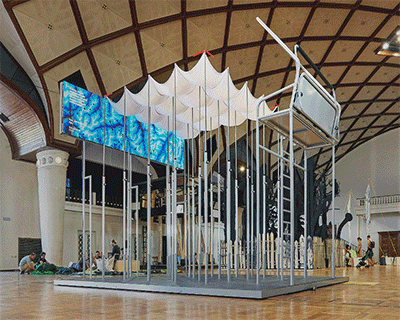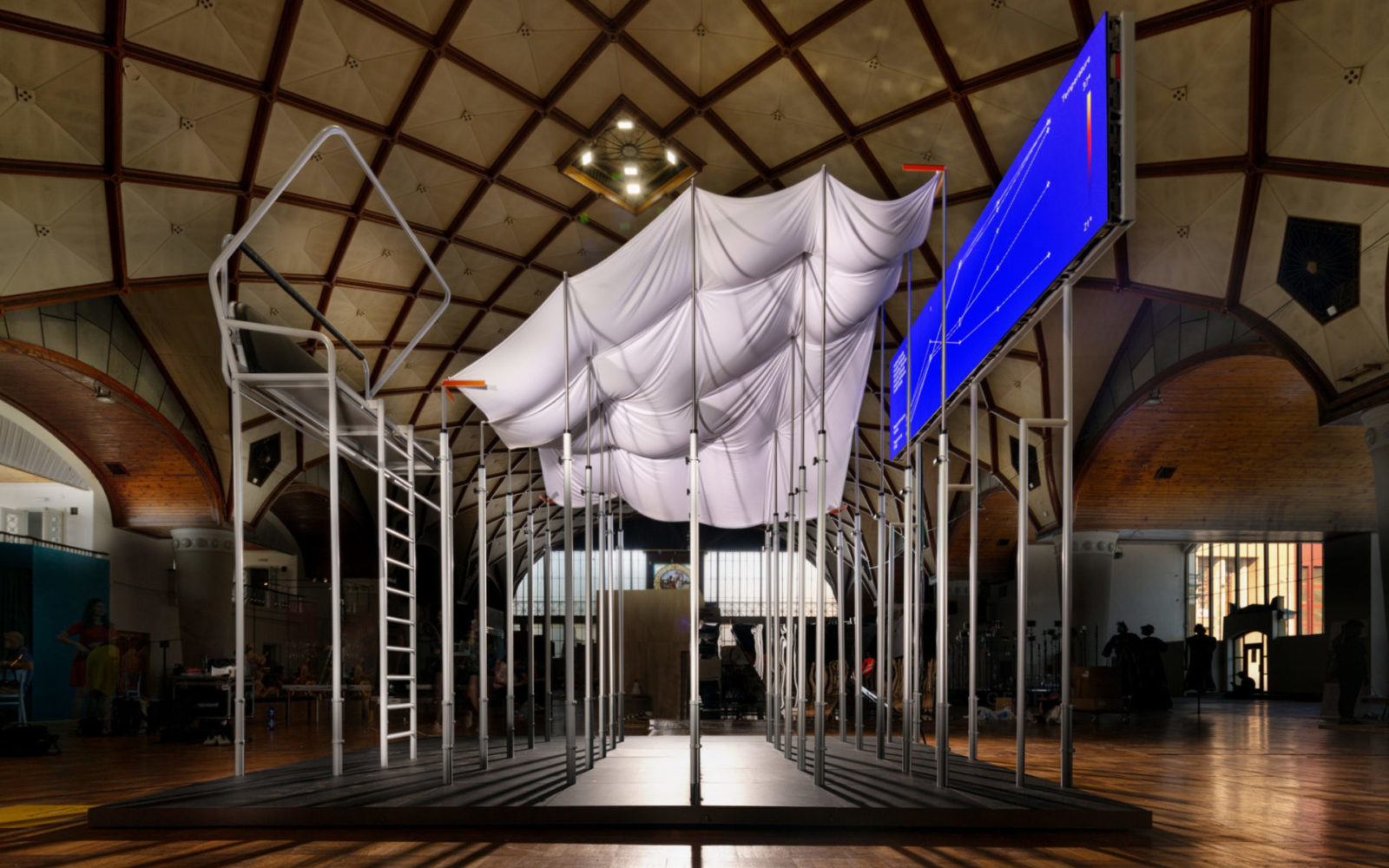

“Artificial Arcadia,” created by Fragmentin in collaboration with KOSMOS architects in 2019, utilizes a 3D spatial contraption to raise questions surrounding how the natural, digital, and artificial shapes contemporary landscapes. The installation features white blankets propped up by poles—reminiscent of famous Swiss mountains—and changes and falls as the mountains themselves begin to melt. What I enjoyed about this piece was how viewers were able to interact with it and walk through the space; in my experience, incorporating space into artwork creates an immersive experience and a more profound impression on the viewer. From what I can guess, the program must calculate the heights of each pole at a given time, so perhaps there’s a section of code devoted to each pole. Also, the program should be making these calculations every few minutes, so there must be a part of the code that regulates the time frames in which these calculations are made and the code repeats itself in a loop. I think that with their narrative surrounding landscapes, the artists rightfully chose to program something that involved 3D space (supported with a 2D graphic) rather than creating an algorithm for 2D work; I really admire how they explored the intersection of coding and art in order to make an important statement about climate change.
![[OLD FALL 2019] 15-104 • Introduction to Computing for Creative Practice](wp-content/uploads/2020/08/stop-banner.png)